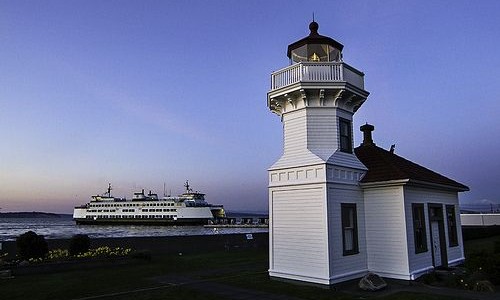By Peter Anderson, Director, Mukilteo Historical Society

Mukilteo’s foghorn has a storied past. The lobby area where you now enter our historic lighthouse was once a fog signal building that was full of machinery needed to operate a large foghorn.
Our light station was originally equipped with a Cunningham eight-foot diaphragm foghorn operated by two air compressors. Its giant trumpet-style horn protruded from the back wall of the fog signal building, and its deep bass notes could be heard every 16 seconds up to eight miles away.
Later photos show smaller, twin trumpets attached midway up on the tower building. We might speculate that this configuration could produce a dual-tone sound.
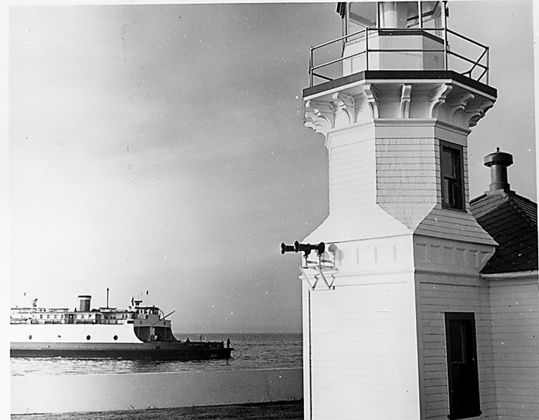
The foghorn air compressor originally used two oil-fueled engines. When electricity arrived at the light station in 1924, one of the engines was changed to an electric motor drive, and the other engine was kept for emergency use in case of interrupted electric service.
Initially, activation of the fog signal was a manual process whenever the Lighthouse Keeper saw dense fog. Later attempts to automate this process met with mixed results. In 1969, testing of a rudimentary optical fog detector at the Mukilteo Light Station showed promising results, and a later, modern detector was installed just outside the fog signal building.
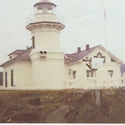
The optical fog detector works by shining a beam of light forward and measuring the backscatter from water particles in the air. A problem occurred when the detector activated the foghorn at all hours of the night on moonlit nights. It was discovered that these false alarms were due to reflection of moonlight from the light-colored seawall. A coat of black paint was quickly applied to the seawall, and it seemed to mitigate the problem.
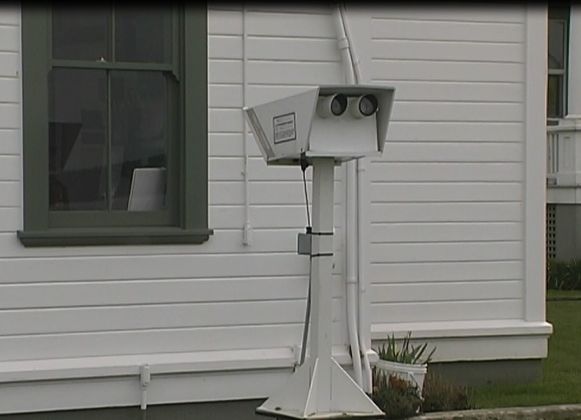
As Mukilteo’s population grew, complaints grew about how loud the foghorn sounded, particularly in residences near the waterfront. This issue was addressed in 1977, by moving the foghorn to a location below the seawall behind a large concrete and metal sound baffle. The foghorn unit was changed from the trumpet-style air horns to an electric CG 1000 horn. The fog signal pattern has also changed over the years – when activated, the current CG 1000 horn sounds a 3-second blast every 30 seconds.
The current foghorn is no longer activated automatically by a fog detector. Instead, Mukilteo’s foghorn is activated from ships by keying their VHF radio microphone 5 times on a particular VHF-FM Channel.
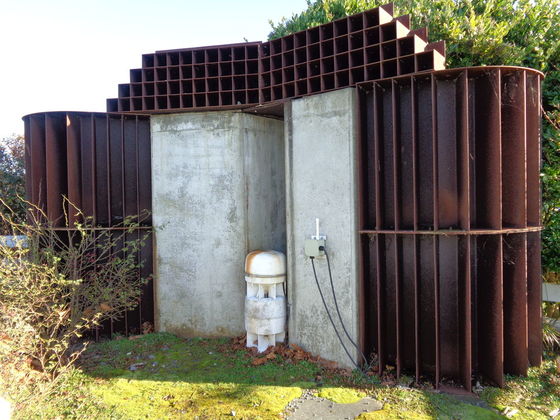
With the advent of modern navigation systems such as marine radar and GPS, many lighthouses have discontinued use of their foghorns completely. The proximity of Mukilteo’s lighthouse to the WSDOT ferry terminal is perhaps one reason why our foghorn remains operational as an on-demand navigational aid.
Originally published in the 11/6/2019 issue of the Mukilteo Beacon.
